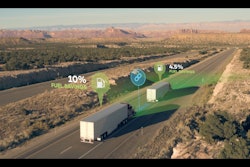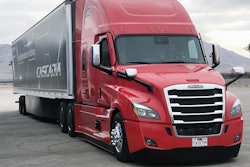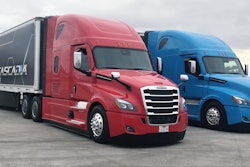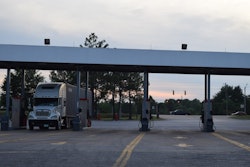
In reassessing its work on truck platooning – a practice the company has tested for several years and many thousand miles in the U.S – the German truck maker said Monday test results have shown that fuel savings even in perfect platooning conditions are less than expected, adding those savings further diminish when the platoon disconnects and the trucks must accelerate to reconnect.
Daimler Truck & Bus boss Martin Daum says analysis currently shows no business case for platooning in U.S. long-haul applications with new, highly aerodynamic trucks.
“The technology we would have to put in does not quantify the savings,” Daum says.
The company plans to reroute those resources and invest around $570 million over the coming years – creating more than 200 new jobs – in a global push to bring highly automated trucks (SAE level 4) to the road within the next decade. Monday, Daimler Trucks North America rolled out an updated Cascadia capable of SAE level 2 autonomous driving, enabled mostly through the truck’s Detroit Connect and Detroit Assurance platforms.
Level 2 automation means the truck can accelerate, decelerate and steer independently. Level 4 – or highly automated driving – is characterized as automated travel in defined areas and between defined hubs without any expectation of the system that a user will respond to a request to intervene.
With Level 2-capable trucks ready to roll off the assembly line later this year, Daum says the company’s focus now shifts to level 4 autonomy.
Just three years ago, Daum was skeptical of autonomous trucking but says the company “learned a lot” in the months since, shifting his optimism for Level 4 driving capabilities.
“Level 4 trucks will be a must some time in the future,” he says.
Daum says level 4 is the natural next step after Level 2 for commercial trucking because it increases efficiency and productivity for customers and cuts costs-per-mile significantly. He says the truck maker plans to skip level 3 (conditionally automated driving) because it “does not offer truck customers a substantial advantage compared to the current situation as there are no corresponding benefits to compensate for the technology costs.”
“Highly automated trucks will improve safety because the systems are never tired. They never have a bad day,” he says. “We feel obligated to innovate. We build to provide solutions. Automated trucks are fascinating pieces of technology and promise a lot of benefits for the future. The benefits of the highly automated truck are significant so we have to tackle that. It’s the only way, in our opinion, to handle the ever-growing volume of freight.”












